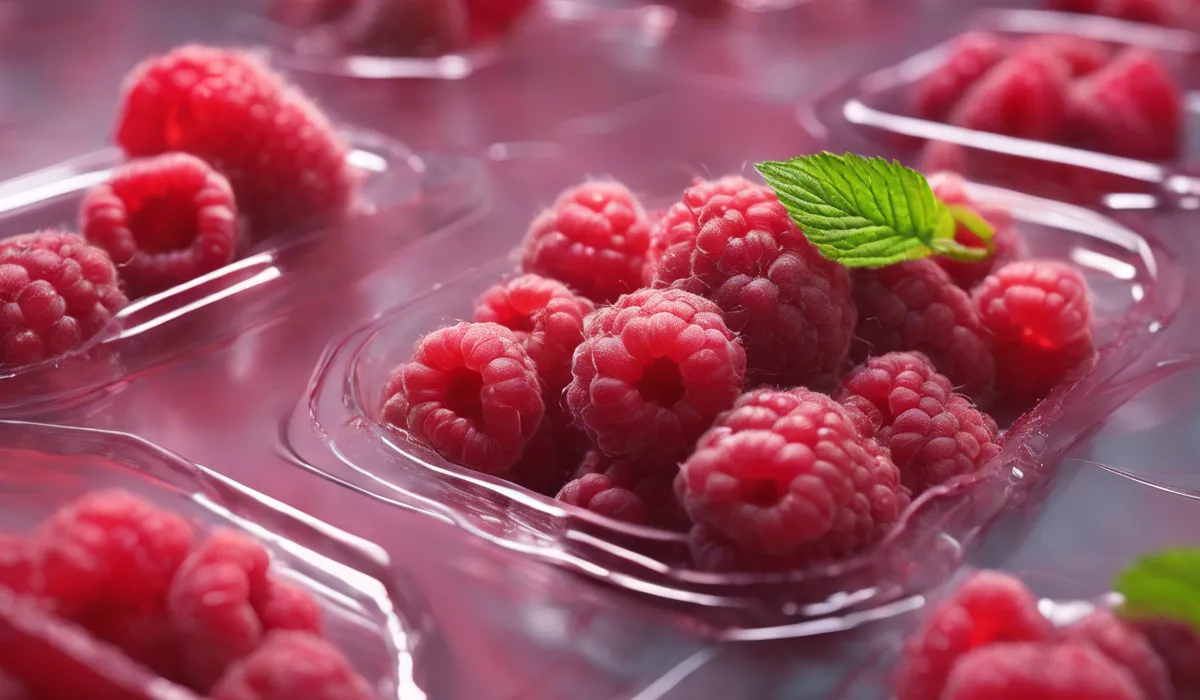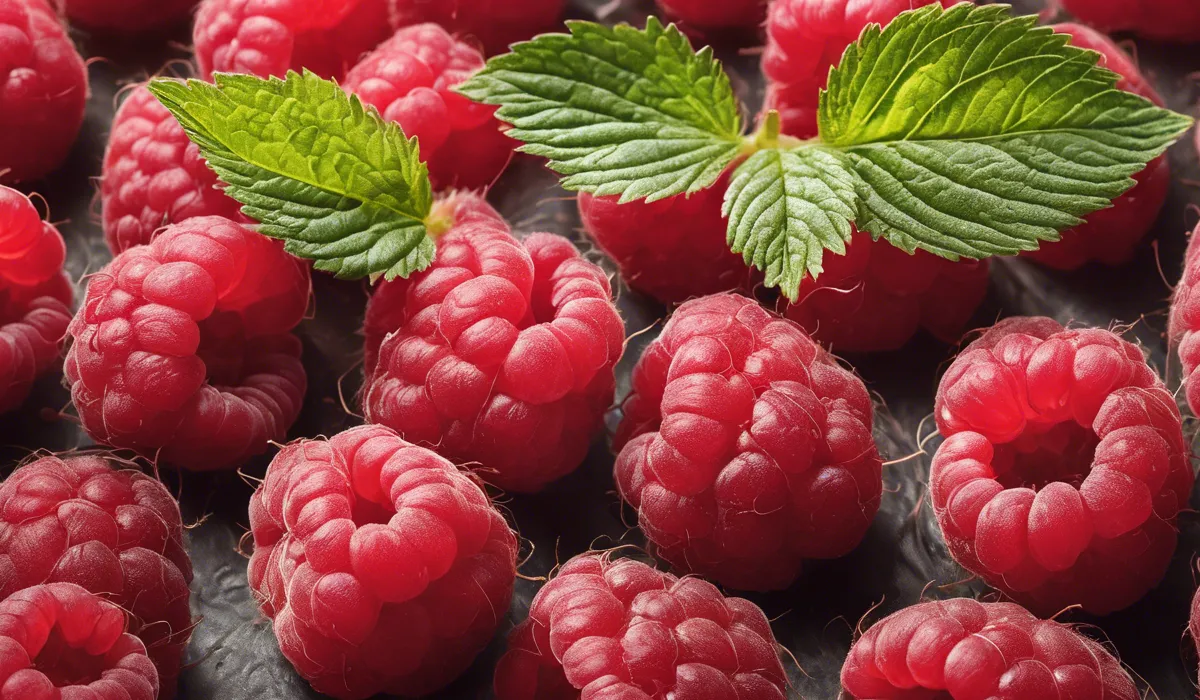Raspberries mold quickly due to their high moisture content and delicate nature, which make them susceptible to mold spores in the air. Their thin skins are easily damaged, accelerating spoilage. To minimize molding, store raspberries dry and refrigerated.
Factors Contributing to Rapid Mold Growth in Raspberries

High Moisture Content in Raspberries
Raspberries are like little sponges, full of water. This high moisture content makes them a perfect place for mold to grow.
Mold loves wet places, and raspberries are just that. When they sit in your kitchen, the water inside them starts to invite mold. This is why when you touch a moldy raspberry, it often feels squishy or wet.
Natural Sugars Present That Feed Mold Spores
Just like you might love sweet treats, mold spores love the natural sugars in raspberries. These sugars are like a feast for mold.
When mold spores land on a raspberry, they start to eat up the sugar, and before you know it, the raspberry is covered in mold.
Delicate Structure and High Surface Area Exposed to Air
Raspberries are not tough like apples or oranges. They are delicate and have a lot of surface area exposed to the air.
This means there’s more space for mold to land and start growing. Because they are so tender, just a little bit of mold can spread quickly over a raspberry.
Raspberries Often Come with Micro-Damages from Harvest and Transit
When raspberries are picked and moved to stores, they often get tiny damages that we can’t even see.
These little bruises are perfect spots for mold to start growing. When raspberries are jostled around, it’s like they get little cuts that mold can enter.
Role of Storage Conditions in Mold Development

Importance of Temperature Control
Keeping raspberries cool is key to slowing down mold. When they are warm, mold grows like crazy.
But, when raspberries are kept in a cold fridge, it’s like putting the brakes on mold growth. The cold air doesn’t let the mold spores wake up and start growing as fast.
Effect of Humidity Levels
Humidity is like a mold party. The more humid it is, the happier mold spores are. If raspberries are stored in a place that’s too humid, it’s like giving mold spores a wet playground to grow in. This is why keeping raspberries in a dry place is so important.
Consequences of Improper Packaging
When raspberries are not packed the right way, it can trap moisture. This trapped moisture is another welcome sign for mold.
Raspberries need to breathe, so if they’re wrapped up too tight, it’s easier for mold to grow.
Cross-Contamination from Other Produce
Other fruits and veggies can carry mold spores too. If raspberries are stored next to other produce that has mold, it can spread to them.
It’s like someone with a cold sneezing on you. Mold spores jump from one fruit to the raspberry, and that’s not good.
Prevention Techniques to Extend Shelf Life

Proper Selection at Purchase
When you’re at the store, look for raspberries that are not bruised or too ripe. Ripe raspberries are softer and more likely to get moldy fast.
So, pick the ones that are just right, not too hard and not too soft. It’s like Goldilocks and the Three Bears, but with fruit!
Handling Tips to Minimize Damage
Be gentle with raspberries. They are not like marbles that you can toss around. When you put them in your bag or carry them home, treat them like little treasures.
The less they are bumped around, the less likely they are to get damaged and moldy.
Refrigeration and Storage Best Practices
Keep your raspberries in the fridge, but not in the very back where it’s super cold. They don’t like to be too cold either.
Find a spot in the fridge where it’s cool but not freezing. And don’t wash them before you put them in there. Water can make them moldy faster.
Washing Techniques and Considerations Before Consumption
When you’re ready to eat your raspberries, that’s when you wash them. Use cold water and be gentle.
It’s like giving them a little bath before they get eaten. But don’t soak them. Just rinse them off quickly under the water. This way, they’re clean and less likely to have mold start growing while you’re eating them.
FAQs About Why Raspberries Mold So Fast
What causes raspberries to mold quickly?
Raspberries mold quickly primarily due to their high moisture content and delicate nature, which leave them vulnerable to mold spores present in the air.
How does the skin of a raspberry contribute to its fast molding?
The thin skin of raspberries is easily damaged, which accelerates spoilage by allowing mold and bacteria to invade more quickly.
What storage conditions can prevent raspberries from molding rapidly?
To minimize molding, raspberries should be stored dry and refrigerated, away from excess moisture and warmth that can promote mold growth.
Can the way raspberries are handled affect how fast they mold?
Yes, gentle handling is crucial because bruising or crushing raspberries can break their skin and hasten the molding process.
Is it possible to extend the shelf life of raspberries to prevent molding?
Yes, by keeping raspberries dry, cool, and undamaged, and by consuming them shortly after purchase, their shelf life can be extended, reducing the risk of mold.
Final Thoughts
Raspberries mold quickly because their high moisture content and fragile structure make them prone to airborne mold spores.
Their thin skins, when damaged, expedite spoilage. Proper storage involves keeping the berries dry and chilled to slow down the molding process.
